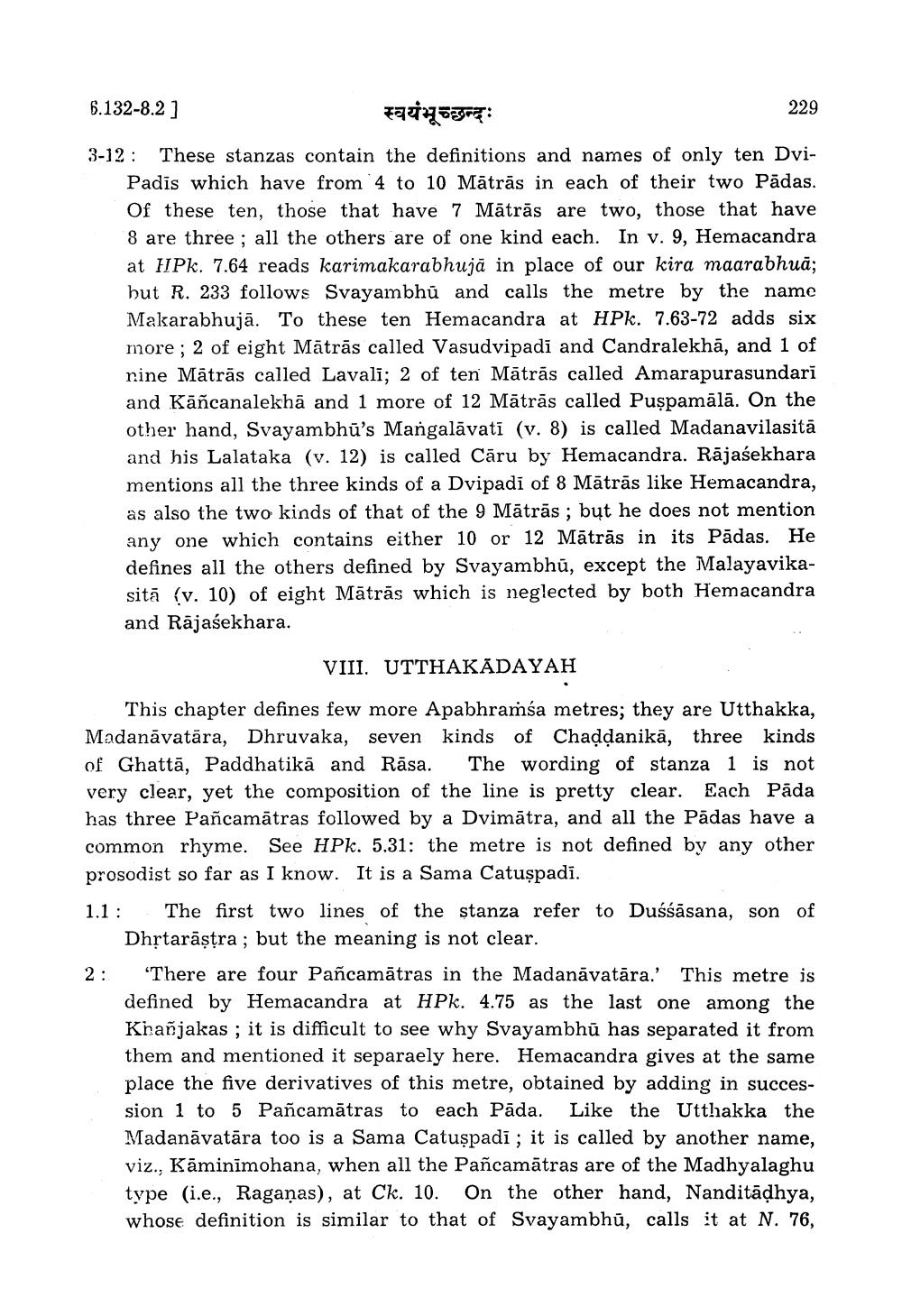________________
6.132-8.21 स्वयंभूच्छन्दः
229 3-12 : These stanzas contain the definitions and names of only ten Dvi
Padis which have from 4 to 10 Mātrās in each of their two Pādas. Of these ten, those that have 7 Mātrās are two, those that have 8 are three ; all the others are of one kind each. In v. 9, Hemacandra at HPk. 7.64 reads karimakarabhujā in place of our kira maarabhuā; but R. 233 follows Svayambhū and calls the metre by the name Makarabhujā. To these ten Hemacandra at HPk. 7.63-72 adds six more; 2 of eight Mātrās called Vasudvipadi and Candralekhā, and 1 of nine Mātrās called Lavalī; 2 of ten Mātrās called Amarapurasundari and Kāñcanalekha and 1 more of 12 Mātrās called Puspamālā. On the other hand, Svayambhu's Mangalāvati (v. 8) is called Madanavilasitā and his Lalataka (v. 12) is called Cāru by Hemacandra. Rājasekhara mentions all the three kinds of a Dvipadi of 8 Mātrās like Hemacandra, as also the two kinds of that of the 9 Mātrās; but he does not mention any one which contains either 10 or 12 Mātrās in its Pādas. He defines all the others defined by Svayambhū, except the Malayavikasitā (v. 10) of eight Mātrās which is neglected by both Hemacandra and Rajasekhara.
VIII. UTTHAKĀDAYAH
This chapter defines few more Apabhramsa metres; they are Utthakka, Madanavatāra, Dhruvaka, seven kinds of Chaddanikā, three kinds of Ghattā, Paddhatikā and Rāsa. The wording of stanza 1 is not very clear, yet the composition of the line is pretty clear. Each Pada has three Pañcamātras followed by a Dvimātra, and all the Pādas have a common rhyme. See HPk. 5.31: the metre is not defined by any other prosodist so far as I know. It is a Sama Catuspadi.
1.1: The first two lines of the stanza refer to Duśśāsana, son of
Dhrtarāştra ; but the meaning is not clear. 2: 'There are four Pañcamātras in the Madanāvatāra.' This metre is
defined by Hemacandra at HPk. 4.75 as the last one among the Knañjakas ; it is difficult to see why Svayambhū has separated it from them and mentioned it separaely here. Hemacandra gives at the same place the five derivatives of this metre, obtained by adding in succession 1 to 5 Pañcamātras to each Päda. Like the Utthakka the Madanāvatāra too is a Sama Catuspadi; it is called by another name, viz., Kāminīmohana, when all the Pañcamātras are of the Madhyalaghu type (i.e., Raganas), at Ck. 10. On the other hand, Nanditādhya, whose definition is similar to that of Svayambhū, calls it at N. 76,




